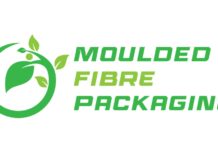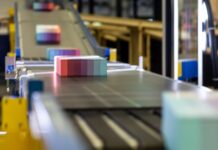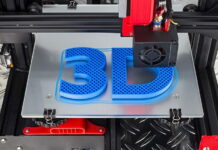When considering supply chain technology, packaging may not be the first thing that comes to mind for most people. However, despite these initial assumptions, smart packaging technology is a rapidly growing and exciting field. Smart packaging technology encompasses a wide range of technologies integrated into packages themselves or playing a crucial role in the packaging process. Here are ten of the most disruptive technologies in this field that are currently revolutionizing the industry:
RFID and NFC Tags:
Wireless devices that transmit real-time data about packages are among the most valuable packaging technologies. Radiofrequency identification (RFID) and near-field communication (NFC) are the leading examples of this technology, enabling data transmissions such as package location, contents, and quality to nearby devices. This enhances order verification for customers and enables more efficient inventory management for logistics professionals.
Printed Sensors:
RFID and NFC tags make important information more accessible, but they may require other devices to gather this data initially. In the past, this meant placing bulky electronics inside packages, which was impractical. Nowadays, businesses can use printed sensors that function fully on thin adhesive strips. Adding quality sensors, vibration monitoring, or other data-gathering systems is as simple as placing a sticker on the inside of a package. This allows businesses to enable more comprehensive data tracking without sacrificing packaging space.
Active Packaging:
Active packaging goes beyond reporting shipment quality and actively protects the contents. It interacts with package components to extend their shelf life and ensure protection during transit. This can include using chemical ingredients to absorb unwanted elements or emit desirable compounds, or incorporating mechanical or digital technologies within the package to monitor and emit antimicrobial solutions or block UV radiation.
Nanomaterials:
Nanotechnology, which deals with components on a nanoscopic scale, is another disruptive aspect of packaging technology. Many materials exhibit unique qualities at this scale, and leveraging these characteristics helps companies create safer, more sustainable, and reliable packaging. Certain aerogels made of nanomaterials offer effective insulation from heat and shocks without occupying as much space as conventional materials. Other nanomaterials provide biodegradable alternatives to traditional packaging materials like plastics and waxes. Nanoparticles are also utilized by logistics companies to prevent microbial contamination in pharmaceutical shipments.
QR Codes:
QR codes, a familiar technology, have recently gained popularity in packaging. These codes allow end customers to scan and access additional information about their packages using a smartphone. Companies can utilize QR codes to provide product information that couldn’t fit on the packaging, including nutritional information, best-before dates, warranties, and usage tips, enhancing the customer experience.
AR Packaging:
Augmented reality (AR) takes customer-packaging interactions to the next level. QR codes can be used to unlock unique AR experiences for customers, where virtual images are displayed over a real-time view of the real world. AR can be used for promotional purposes, such as providing music from label artists or enabling interactive experiences to enter product sweepstakes, creating a novel and engaging customer experience.
AI Package Design:
Some smart packaging technologies focus on processes surrounding packaging rather than the package itself. One groundbreaking and practical example is artificial intelligence (AI) in package design. AI can consider thousands of possibilities and perform complex calculations much faster than humans. Its speed and accuracy make it ideal for improving packaging, such as designing packages that use fewer materials. Businesses using AI to generate novel package designs can create stronger or more cost-efficient packaging in less time.
3D Printing:
Also termed additive manufacturing, 3D printing offers superior packaging designs. It is faster and produces less waste compared to conventional production techniques, making it more cost-effective. 3D printing allows for unique shapes and customization in packaging, while also enabling the use of sustainable materials, aligning with the growing demand for eco-friendly packaging.
Blockchain Tracking:
Although blockchain is a relatively new technology, it is becoming increasingly viable in the world of smart packaging. While blockchain is most famous as the underlying technology behind cryptocurrencies, it offers significant advantages in logistics. Blockchain tracking solutions can store updates from in-package sensors, improving tracking throughout the supply chain. The unchangeable and transparent nature of blockchain records helps combat fraud and enhance supply chain visibility. Consequently, blockchain tracking instills greater trust in end customers regarding the brands they purchase from.
Robotics:
Robots play a vital role in packaging and are becoming increasingly important. Tasks such as manufacturing packaging, folding boxes, loading trucks, and retrieving packages from warehouses are repetitive and physically demanding, making them hazardous and inefficient when performed by humans. Robots excel in such workloads and can automate these tasks, accomplishing them faster and more safely. This allows human workers to focus on more nuanced and engaging tasks. By incorporating robots, packaging centers can reduce errors, lower operating costs, and maximize throughput.
Smart packaging technology holds significant potential to transform the industry. As technology continues to advance, new solutions and improved innovations will emerge, making smart technologies the standard in packaging. These advancements will enhance transparency, efficiency, sustainability, and reliability, benefiting companies and consumers alike.




























